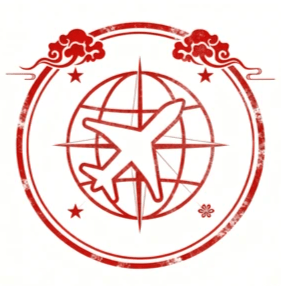The Southern Lion Dance (Nanshi or Xing Shi, the 'Awakening Lion') is arguably the most recognizable symbol of Chinese culture around the world, primarily due to its widespread adoption by overseas Cantonese communities.() Far from mere entertainment, it is a complex performing art deeply rooted in Chinese martial traditions and symbolic philosophy.
Historical Origins, Lineages, and the Martial Arts Backbone
The Southern Lion Dance originated in the Guangdong region of Southern China. Historically, it served the crucial function of blessing communities, warding off misfortune, and exorcising evil spirits during major events like the Lunar New Year and busess opening.
The most profound characteristic of Nanshi is its inseparable link to Chinese martial arts (Kung Fu). The performers' footwork and body stances are derived directly from Southern Kung Fu styles.() For instance, the Jow Ga (周家) style explicitly demands that practitioners have a solid martial arts background to perform the lion dance well.() This connection establishes Nanshi as a "living martial art" rather than just a folk dance.
The Southern Lion Dance is generally categorized into two main styles ():
- Fut San Lion (佛山狮): Characterized by a powerful, majestic appearance. It emphasizes strength, vigor, and a fierce temperament.
- Hok San Lion (鹤山狮): Known for its agile, playful, and expressive nature, often mimicking the subtle movements of a cat
The Color Symbolism of the Lion Head
A common misconception is that the colors of the lion heads are purely decorative. In reality, the complex color coding of Southern Lion heads is derived from the epic Romance of the Three Kingdoms, representing the core ethical values of benevolence, loyalty, and strength valued in Lingnan culture. These designs allow audiences to instantly identify the lion's character and the intention of the performance:
Golden Yellow / White Beard Liu Bei Lion (仁义狮)
Benevolence, Nobility, Peace, and Prosperity. Used in high-status ceremonies or grand openings, symbolizing harmony and respect.
Red / Black BeardGuan Gong Lion (忠义狮)
Loyalty, Valor, Righteousness, and Integrity. The most common and easily recognizable, serving a strong religious function for protection and warding off evil.
Black / Black BeardZhang Fei Lion (猛狮)
Ferocity, Unyielding Strength, and Straightforwardness. Appears in martial arts challenges or events where raw power and intimidating presence are required.
Furthermore, during traditional performances, the Southern Lion always performs a distinct ritual: bowing three times to the audience, the host, or the ancestral shrine. This gesture represents politeness and respect—a key characteristic that differentiates Nanshi from the Northern Lion style .
The Pinnacle of Skill: Drum Rhythms and High Pole Acrobatics
The artistry of Nanshi relies on the profound synchronization between the dancers and the percussion team (drum, gong, and cymbals). The drum is poetically referred to as the "lion's heartbeat".() Every specific beat, pace, and rhythm communicates a different emotion or action of the lion—whether it is joyful, resting, or preparing for a leap. Each martial arts school maintains its own unique rhythmic language .
The ultimate expression of Nanshi's skill is the High Pole Lion Dance (Jongs).() This discipline transforms the folk tradition into an internationally competitive sport:
The "Plum Blossom Jongs": The performance takes place on high metal poles, or jongs, reaching up to 2.8 meters (9.2 ft) in height, with gaps between the poles as wide as 1.8 meters (6 ft) .
Acrobatic Feats: The two performers execute dangerous balancing acts, jumps, and acrobatic maneuvers across the high poles, simulating a mythical beast traversing jagged cliffs. A standard competition setup requires at least 21 poles . This spectacular display has been key to the international growth and appreciation of the art form .
Visitor Experience: Where to Watch and Participate
Foshan Ancestral Temple (Zumiao): Widely regarded as the "Sanctuary of Lingnan," Zumiao is the best location for consistent, high-quality viewing . Thrilling lion dance performances are held daily , featuring classic routines like "Cai Qing" (Picking the Green) and "High Platform Drinking."
Hands-on Workshops (Guangzhou/Foshan): For a deeper dive, several cultural centers and martial arts schools offer workshops . Participants learn the basic stances and movements and have the opportunity to wear the lion head and participate in the rhythmic drumming , gaining a visceral understanding of the lion's "heartbeat" () and energy.

